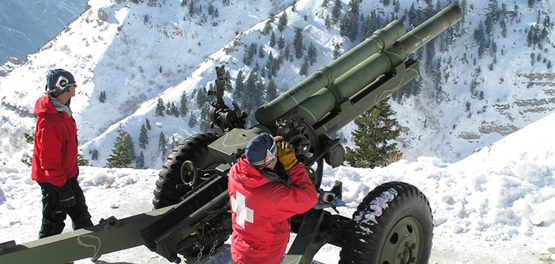
Application Problems
There are many applications of quadratics, some of them simple enough to make an appearance in your high school mathematics classroom.

Quadratic functions are used widely in science, business and engineering to model physical phenomena and how quantities change over time. The physical parabolic shape of a quadratic can describe the movement of water in a fountain, the movement of a ball (and in fact any object thrown into the air), or the shape of satellite dishes.
In avalanche control, triggers are often fired onto a mountain face from an adjacent face to create an avalanche. What height does the trigger reach and where does it land? A quadratic can model this perfectly.
Maximum and minimum values of quadratics are used in the study of moving objects and in acceleration and volume problems. Business models also include quadratic functions and are used to help forecast profit and loss.
When solving practical problems these steps might be helpful:
- Identify the unknown (what are you solving for?) and use clues given to express other relevant quantities in terms of the unknown. Sometimes you will have to introduce a pronumeral to represent the unknown amount.
- Use the practical context to find relationships between the different amounts involved, and construct equations.
- Solve them, often for when they equal zero, or to find the maximum or minimum.
- Use your common sense and the context of the problem to interpret the results. For example, when finding length, area or time, can these have negative values?
Let's have a look at the following examples.
Examples
Question 1
The area of a rectangle is $160$160 square metres. If the length of the rectangle is $6$6 m longer than its width, find the dimensions.
Let $w$w be the width of the rectangle in metres.
First find the width of the rectangle by solving for $w$w.
Now find the rectangle's length.
Question 2
The product of 2 consecutive, positive numbers is $56$56.
Let the smaller number be $x$x.
Solve for $x$x.
Now find the larger number.
Question 3
The perimeter of a rectangle is $28$28 cm.
Let the length be $x$x cm and the width be $y$y cm.
Find an equation for $y$y in terms of $x$x.
Make $y$y the subject of the equation.
Given that the area of the rectangle is $48$48 cm2, find all of the possible values of $x$x.
Write all solutions on the same line separated by commas.
Find all of the possible values for $y$y.
Write all solutions on the same line separated by commas.